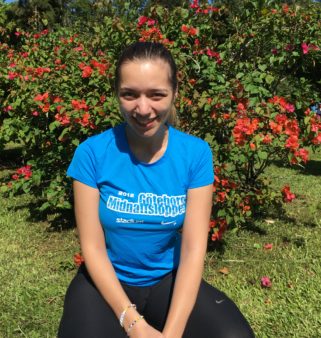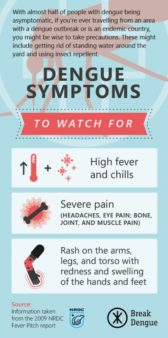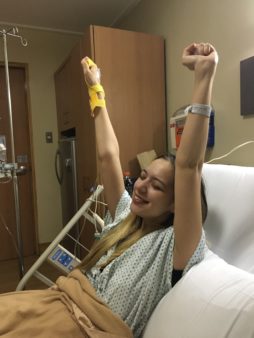- by Gary Finnegan
Dengue in Davao: Zarah went to the Philippines for work and wound up in hospital
Zarah Caraan was working in Manila with AIESEC, the youth leadership movement when she had an encounter with a mosquito. What happened next left her with the first-hand experience of dengue in Davao – but hasn’t dimmed her wanderlust
‘I had a weekend off so I decided to go to a nature reserve park near Davao in the southern part of the country,’ she recalls. ‘It had been raining and was very humid – which I later learned was an ideal environment for mosquitoes.’

After a weekend well spent, Zarah got back to her desk where she arranged placements for young people keen to work on AIESEC development projects in the Philippines. It was her second time in the country, having previously worked on a project.
Around a week after the trip to Davao, she began to feel a little unwell. ‘I had flown back to Manila and worked all week and by Friday I was feeling a little low,’ she told Break Dengue. ‘I thought I was just tired or had come down with something mild.’
Tired and suffering from a fever, Zarah spent a day or two in bed – but her symptoms showed no signs of easing. ‘I was getting dizzy and could hardly drink; I started feeling joint pain so I called somebody who immediately suspected that I might have dengue fever’.

On her previous stint in the Philippines, Zarah has seen another volunteer endure a dengue fever infection so she knew that it was serious but not usually fatal. Still, there was a real risk of hospitalization so her next call was to her health insurance company in Sweden. They advised her to go to a large accredited hospital in Manila which is popular with western visitors.
As her symptoms were similar to the flu, the doctor suggested this may be the real cause of her fever and joint pain. However, blood tests showed otherwise. Within a couple of hours, the medical staff confirmed that Zarah had contracted dengue in Davao and advised her to go home, rest and take plenty of fluids.
Read more on why dengue home remedies don’t work
‘They told me to go to the clinic for a new blood test if I don’t feel better in a couple of days,’ she says. ‘As I was still quite unwell, I had another test later that week and it showed that my platelet levels still hadn’t gone up. The doctors said they would have to admit me to hospital.’
Zarah spent five long days in the hospital on an intravenous drip before being discharged – more than two weeks after she began showing signs of dengue. ‘It was pretty boring!’ she says. ‘I was given IV fluids to help rehydrate me and the hospital staff encouraged me to eat and drink like a normal person. Eventually, they let me go home but it was still another week or two before I was fully recovered.’ more about the world’s first dengue vaccine program
Learn more about the world’s first dengue vaccine program
As a result of her brush with dengue in Davao, Zarah has learned a lot about the disease which affects millions of people every year. ‘I didn’t know much about dengue or malaria before going to the Philippines but have since learned that there are several types of dengue and I suspect that I had the milder type,’ she says. ‘I am acutely aware that I had a very privileged perspective given that I had access to one of the best hospitals in the city. A lot of people die from dengue in the Philippines every year so I am fortunate that I had access to good healthcare.’

The experience of dengue in Davao hasn’t dented Zarah’s commitment to AIESEC projects which aim to deliver on the UN Sustainable Development Goals (SDGs) but has made her wary of mosquitoes. ‘I also heard there is a dengue vaccine so, if that’s available, I would try to get that – but I wouldn’t be put off from traveling.’
AIESEC & Break Dengue: seeds of a new partnership
AIESEC is a youth leadership movement with consultative status at the United Nations Economic and Social Council. Founded by young people in 1948 in the wake of the Second World War, the organization has developed a global network of more than 30,000 people that view youth leadership not as an option but as a responsibility.
Working towards a dengue-free Philippines: a look at the country’s vaccination program
Break Dengue and AIESEC will soon reveal an exciting new partnership that gives young people from around the world an opportunity to travel, learn and contribute to making the world a better place.
—

